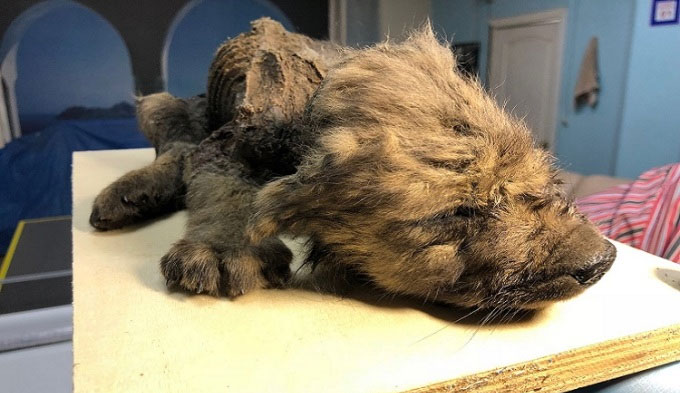An international team of geneticists and archaeologists, led by the Francis Crick Institute, has discovered that the ancestors of dogs may have originated from at least two distinct populations of ancient wolves.

The research team used samples from an 18,000-year-old mummified wolf pup in Yakutia. (Photo: Sergey Fedorov)
In a study published on June 29 in the journal Nature, scientists examined the genomes of ancient wolves to gain a better understanding of the evolutionary origins of the first dogs. They analyzed 72 wolf genomes dating back up to 100,000 years from Europe, Siberia, and North America. The samples in the study were sourced from previously excavated ancient wolves. Archaeologists from 38 institutions across 16 different countries participated in this research. Among the samples, the most notable was a well-preserved complete head of a Siberian wolf that lived 32,000 years ago. Nine DNA laboratories collaborated to produce sequencing data from the wolves.
Through genome analysis, the research team found that both ancient and modern dogs are genetically more similar to wolves in Asia than those in Europe, indicating that they were domesticated in the East. However, they also discovered evidence that domestic dogs possess DNA from two separate wolf populations. The first dogs from northeastern Europe, Siberia, and the Americas appear to have originated from the East. In contrast, the ancestors of dogs in the Middle East, Africa, and southern Europe seem to be related to wolves in the Middle East.
A possible explanation for the discovery of dual ancestry is that wolves underwent a domestication process more than once with different populations, which later intermingled. Another possibility is that the domestication process occurred only once, and the first dogs hybridized with wild wolves, leading to two distinct ancestries.
“Through this project, we have significantly increased the number of sequenced genomes of ancient wolves, allowing us to create a detailed picture of the ancestry of dogs over time,” said Anders Bergström, a postdoctoral researcher at the Ancient Genomics laboratory at Crick.
The research team is continuing to search for additional dog ancestors, which may provide more precise insights into where the domestication process took place. They are currently focusing on genomes from other locations, including areas in the southern regions. Given that the 72 ancient wolf genomes span approximately 30,000 generations, the research team can construct a timeline that reflects how wolf DNA has changed and the role of natural selection.


















































